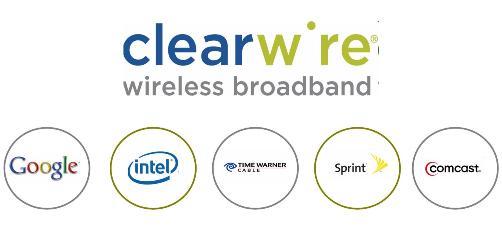Unlike some examples where an industry giant pulls together a coalition of startups to help establish a new category, the story of the establishment of the 4G category is one where a small startup (Clearwire) pulled together a coalition of industry giants (Intel, Motorola, Google, Sprint Nextel, Comcast, Time Warner Cable, Bright House Networks).
In 2004 Craig McCaw acquired Clearwire, a collection of assets, most importantly a collection of spectrum licenses in the EBS and BRS bands around 2.5 GHz. One of McCaw’s other companies (NextNet) had already been working on technology to deliver 4G-like capabilities. He made NextNet a subsidiary of Clearwire to focus on building the network equipment the company would need and approached Intel about becoming a strategic partner.
Intel largely missed the opportunity for its chips to be included in cellphones. However, early in 2003 the company launched a strategic initiative with a chipset called Centrino that would add WiFi to laptops and other mobile computers. The success of the Centrino initiative to establish WiFi as the ubiquitous standard for wireless local area networks encouraged the company to pursue making WiMAX the ubiquitous standard for wireless metropolitan area networks. In October 2004, Intel invested an undisclosed (but “significant”) amount of money in Clearwire and began working with NextNet on deploying pre-standard WiMAX.
During 2005 the company launched service in its first 25 markets covering about 5 million people. In 2006 Intel invested an additional $600M into Clearwire. Motorola became a second strategic partner by investing in Clearwire and acquiring NextNet. These three companies each brought critical elements to the table in making the push for WiMAX to become the de facto standard for 4G wireless. By 1Q2007 Clearwire had signed up 285,000 subscribers. In its initial 25 markets, more than 10% of homes passed had signed up for Clearwire service and many of those markets had achieved cash-flow break even. Those results were impressive and proved the concept of 4G-like wireless broadband, but they were far from significant enough to establish the 4G category. The company would need more help.
A truly mobile service has to work wherever you go and it has to stay connected even when you are traveling at highway speeds. Fixing these problems would require a lot more spectrum and a lot more money. Sprint and Nextel had each separately acquired EBS/BRS bands in about a third of the country each. The two companies had merged in 2005. In 2008 Sprint Nextel announced the combination of its 4G business with Clearwire to form the new Clearwire. The new venture received Sprint Nextel’s 2.5 GHz spectrum (resulting in a nationwide footprint), and $3.2 billion in cash from Intel, Google, and three of the largest cable companies.
The deal brought more than just spectrum and cash. The third missing component to firmly establishing the 4G category was a marketing and distribution strategy. The new Clearwire would build and operate the 4G network, and Sprint Nextel, the cable companies, and other wholesale customers would sell the capacity on that network to their customers.
By the end of 2010 Clearwire’s network covered 119 million people, their subscriber base had grown to 4.4 million, and revenue had grown to $180M in the fourth quarter alone. Clearwire and its allies had successfully created the 4G category. Within a few years almost no one would consider buying a phone that didn’t have 4G technology. Unfortunately, category making can be hard and expensive. LTE ended up winning the technology war over WiMAX. Clearwire ran out of money and was acquired by Sprint. Sprint itself struggled to survive and eventually was bought by T-Mobile. However, the core capabilities and assets that started in Clearwire continue to provide mobile broadband leadership for T-Mobile.
It’s impossible to know the “what if’s” around 4G if Clearwire hadn’t led the creation of a powerful collection of tech giants to establish the category. We will never know because Clearwire and its allies did make true mobile broadband available at the same time (2007–2010) that Americans were falling in love with the smartphones that needed it most.

